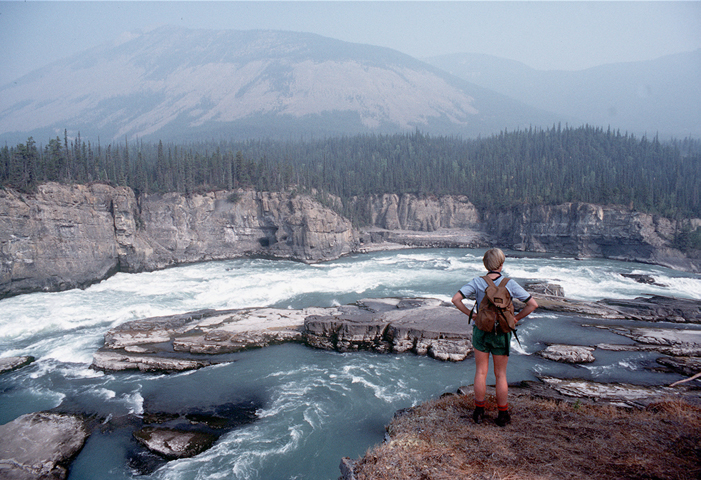Nahanni, << nah HAH nee, >> National Park Reserve is a protected area in Canada’s Northwest Territories. It covers more than 7,400,000 acres (3,000,000 hectares), including parts of the South Nahanni and Flat rivers, in the Mackenzie Mountains region. The government of Canada established Nahanni National Park Reserve in 1976. In 1978, the United Nations Educational, Scientific and Cultural Organization (UNESCO) made the park reserve a World Heritage Site, recognizing it as an area of cultural and natural importance. In 1987, the portion of the South Nahanni River inside the park reserve was named a Canadian Heritage River.

In addition to the Mackenzie Mountains, significant features in Nahanni National Park Reserve include canyons, caves, and large deposits of tufa, a substance formed by calcium deposits from thermal springs. There are several thermal springs within the park reserve, including the Kraus, Rabbitkettle, and Wildmint hot springs. Virginia Falls, on the South Nahanni River, has a vertical drop of 302 feet (92 meters). The park experiences short, cool summers and long, cold winters.
Forests in Nahanni National Park Reserve contain fir, tamarack, pine, poplar, aspen, spruce, and birch trees. Areas of alpine and subalpine tundra support other plants, such as mountain avens and heather, that are suited to mountain environments. Nahanni asters, which grow at Wildmint Hotsprings, have not been recorded anywhere else.
Mammals that live in the park include bears, beavers, caribou, lynxes, moose, sheep, goats, and wolves. More than 180 species of birds have been recorded in Nahanni. They include golden eagles, red-necked grebes, loons, and trumpeter swans.
Back-country whitewater canoeing, rafting, and kayaking are among the most popular activities at Nahanni National Park Reserve. Other activities include hiking and day trips to Virginia Falls. The park has no roads. It is accessible only by aircraft.
In 2009, the Canadian government increased the size of Nahanni National Park Reserve by more than six times, expanding it from about 1,177,700 acres (476,600 hectares) to more than 7,400,000 acres (3,000,000 hectares).
